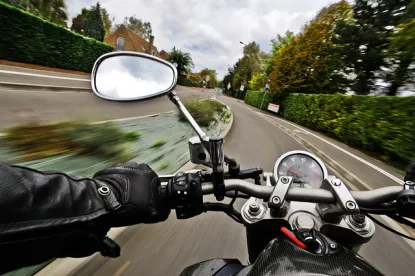If you own a vehicle in New Jersey, you are required to carry auto insurance. For many people, it is as simple as that, and they try to obtain the cheapest policy possible to meet the legal requirements. But sadly, many motorists in New Jersey are unaware that while your automobile insurance covers damages you may cause in an accident, your policy can also protect you and your loved ones.
While there are many parts to an auto insurance policy, here we will only look at two major components of a policy: Liability Coverage, also known as 3rd party coverage, and Uninsured/Underinsured Motorist (UM/UIM) coverage, also known as 1st party coverage. Both liability and UM/UIM generally have both bodily injury and property damage components. We will be dealing only with the bodily injury component for our purposes here.
Understanding Liability Coverage
When you apply for your auto insurance, you select the amount of liability coverage for your policy.
What is the minimum liability coverage in New Jersey?
The state minimum in New Jersey is $15,000/$30,000 for liability coverage. Your selection of liability coverage represents the maximum amount of money that your insurance company will pay someone else for their injuries if you cause an accident. Your insurance company will pay a maximum of $15,000 to any one person injured in an accident that you cause and a maximum of $30,000 for injuries to multiple people in an accident you cause, with no one person receiving more than $15,000. Of course, you can select higher limits than the state’s minimum requirement. For example, you could choose liability limits of $100,000/$300,000 or $250,000/$500,000.
Why would you choose higher limits that cost you more in premiums?
For many people, it is the peace of mind knowing that their personal assets won’t be at risk if they cause, for instance, $75,000 worth of damage or injuries. As a practical matter, it is very rare that a driver’s personal assets are ever at risk in a lawsuit anyway, but that is a topic for another post.
In short, your liability coverage on your automobile policy covers damages to other people in a car crash that you cause. This is why it is sometimes referred to as 3rd party coverage—because it covers a third party.
Unfortunately, an overwhelmingly large number of motorists in New Jersey have liability limits of only $15,000/$30,000, and there are some less-common policies we won’t discuss here that provide no liability coverage at all.
Understanding Uninsured and Underinsured Motorist Coverage
The second major component to bodily injury coverage in an auto insurance policy is the Uninsured/Underinsured Motorist coverage. Once again, this is selected when you are applying for your policy, and you can choose different levels of coverage. The caveat, however, is that your UM/UIM limits cannot be higher than your liability limits. It is possible to select UM/UIM limits that are lower than your liability limits, but you should not do this for reasons you’ll see below.
Remember, your liability coverage protects other people from harm you might cause. The UM/UIM coverage protects you from harm that someone else might cause you or your loved ones, which is why it is often referred to as 1st party coverage.
The reason for not allowing higher UM/UIM limits is to prevent person “A” from providing themselves with high levels of coverage while not covering other people who might be harmed by person “A”’s negligence.
UM/UIM coverage is something that, unfortunately, many motorists in New Jersey are not familiar with despite its importance. For almost all insurance policyholders in New Jersey, their UM/UIM coverage should be just as important, if not much more important, to them than their liability coverage. You pay for liability coverage to protect other people. You pay for your UM/UIM coverage to protect you and your loved ones.
Generally, if you are injured in a crash that is someone else’s fault, you make a claim against their insurance company, and that person’s liability coverage would cover your claim. But what happens if that person is driving without insurance?
What is uninsured motorist coverage?
Uninsured motorist coverage is the maximum amount of money, depending on your selection, that your own insurance company will pay you, and in certain circumstances your family members, if you are injured in a crash caused by someone with no insurance of their own.
What is underinsured motorist coverage?
Underinsured motorist coverage is similar, but refers to coverage if you are injured by a driver whose liability coverage is less than your UM/UIM coverage.
As mentioned earlier, many people are driving around New Jersey with only $15,000 minimum coverage. If you are seriously injured, that is simply not enough to make you whole. Underinsured motorist coverage attempts to fill that gap. For example, if the person that caused your injuries has $15,000 in liability coverage, and you have $100,000 in UM/UIM coverage, after the other person’s insurance company pays their $15,000 liability limits for your injuries, you can then turn to your own insurer, under the UM/UIM coverage and make a claim for the remaining $85,000 (the amount of your UM/UIM coverage minus the amount of liability coverage available to you).
An important caveat to accessing your UM/UIM benefits is that you can only make a claim under your UM/UIM coverage if your UM/UIM coverage is higher than the liability coverage of the person who caused the crash. So, let us look at two examples that show the importance of UM/UIM coverage:
Scenario: Driver A rear-ends Driver B. Driver B sustains serious injuries to her spine and requires spinal surgery to fix the damage. In addition to the pain and suffering, Driver B is out of work for several months and loses $25,000 in pay.
Example 1: Driver A has liability coverage of only $15,000. Driver B has UM/UIM coverage of $250,000. Driver A’s insurance company agrees to pay Driver B the $15,000. Even though Driver B’s injuries and losses are far greater than $15,000, that is all the insurance company is required to pay. Driver B can then turn to her own insurance company and make a claim under her UM/UIM coverage for up to $235,000 ($250,000 minus the $15,000 that was available under Driver A’s policy).
So, in total, Driver A is afforded a maximum of $250,000 (her UIM limit) of coverage. While even this amount likely won’t fairly compensate Driver B for everything she’s lost—remember she will always have screws and plates in her spine and will likely have residual pain and issues for the rest of her life—it is at least a good start and a far better scenario than example 2, below.
Example 2: Driver A has liability coverage of only the state minimum requirement, $15,000. Driver B also carries the state’s minimum required limits of $15,000 UM/UIM coverage. Driver A’s insurance company agrees to pay Driver B the $15,000. Driver B has no other recourse. The most she will recover for these life-altering injuries is $15,000.
Conclusion
If there is one takeaway from your research about auto insurance and its importance, make it this—be sure you choose UM/UIM limits appropriate to protect you and your loved ones. Example 2, above, is a sad situation that we, unfortunately, see far too often.



 />i
/>i

